Dance companies worldwide – but above all in the U.S. – have taken a hard hit since the last recession. Large or small, no company has escaped the economic hammering. Some, like Ballet Florida, have collapsed under a mountain of debt. Some, like New York City Ballet, have had to lay off dancers. Many have had to make deep programming cuts, and some have had their dirty laundry publicly aired in their battle to stay afloat – most notable in recent months has been the scandal at Ballet San Jose (riveting details here.)
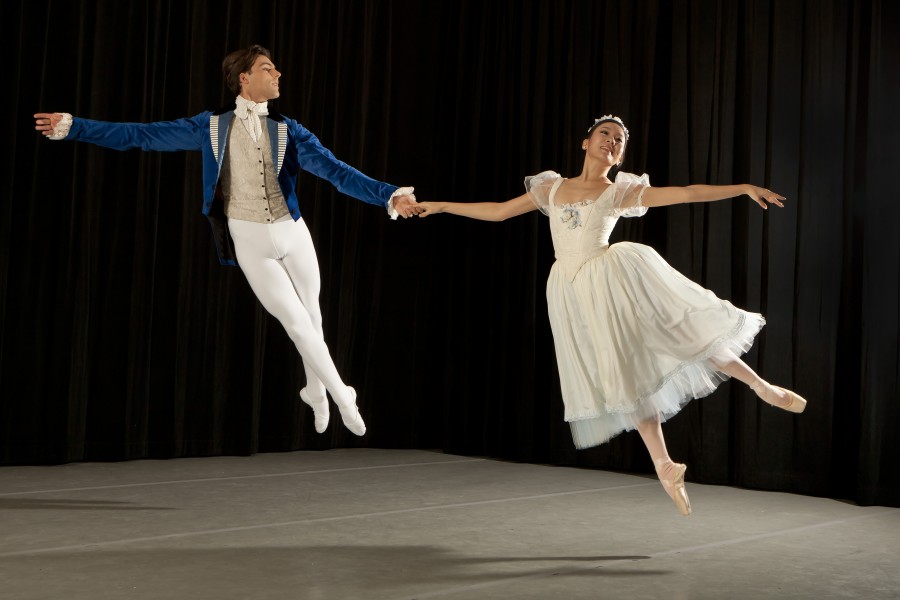
New York Theatre Ballet dancers Young Wha Lim and Manuel Barriga in Antony Tudor's 'Soirée Musicale'. Photo: Richard Termine.
Emitting a fiery sparkle amid the general gloom is New York Theatre Ballet, which for over 30 years has served up invigorati ng revivals of rarely seen classics, as well as imaginative new commissions, in a wide range of styles – heroic for a troupe of only 13 dancers operating on a shoestring budget in the world’s most expensive city for dance. Hailed by critics, including the famously grouchy Alastair Macaulay, as “a treasure,” the company offers not only a rare and invaluable window into the evolution of modern ballet, but also commits to making dance broadly accessible by keeping ticket prices affordable (under $30!), and stages witty and engaging storybook ballets by choreographers who create sophisticated productions that appeal equally to audiences young and old (see NYTB’s current production of Sleeping Beauty).
NYTB’s inspired programming has paired early Frederick Ashton with Antony Tudor’s haunting Jardin aux Lilas, José Limón with Agnes de Mille’s riotous Three Virgins and a Devil, and the stunning world premiere of Richard Alston’s A Rugged Flourish with early Merce Cunningham. Founder and Artistic Director Diana Byer also promotes the exciting new work of young, up-and-coming choreographers (see NYTB’s current ‘Signatures’ program).
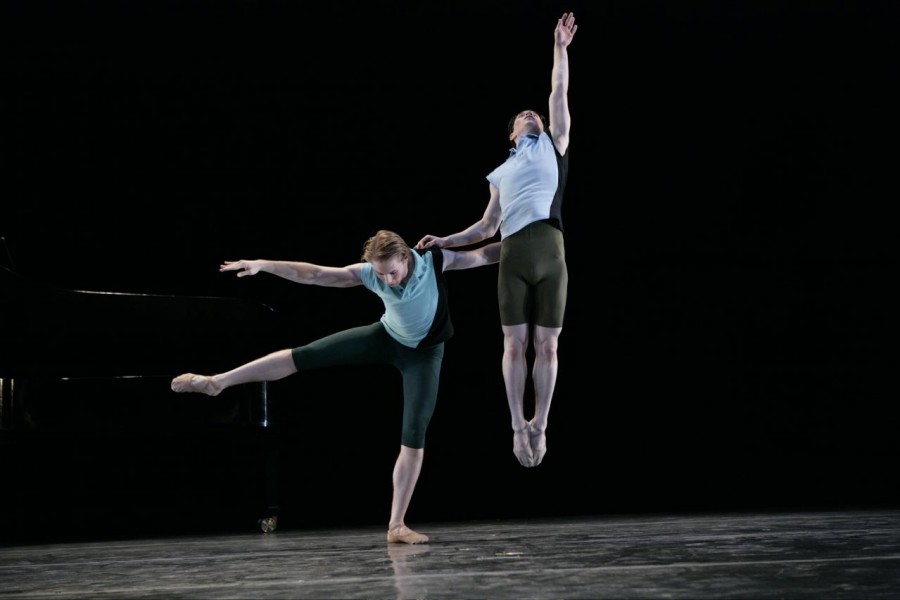
New York Theatre Ballet dancers in Game Two. Choreography by Matthew Neenan. Photo: Richard Termine.
Byer notes that the company has been fortunate to have had the “extraordinary talents” of Sylvia Nolan, Resident Costume Designer of the Metropolitan Opera House and set designer, Gillian Bradshaw Smith on all of their productions since the company began. The dancers have been impeccably trained by Byer herself, who was a student and protégé of Antony Tudor, and by Margaret Craske (from Diaghilev’s Ballets Russes, trained by Enrico Cecchetti) and Sallie Wilson who served as Ballet Mistresses.
“Because NYTB tours to small venues across the USA, with many audience members having little or no live theater experience we try to present ballets which are accessible to a wide range of tastes,” Byer emphasizes. “We work very hard to keep our production costs down without sacrificing quality. This keeps our ticket prices at a very affordable price point. We also fill a niche. Our chamber ballets can be performed almost anywhere. We don’t need a huge stage or lots of tech time. We can go into any community anywhere in the country and bring full productions regardless of stage size. Sets are built for touring and can be adjusted to most stages, large and small.”
“Finding repertory for a chamber company is never an easy task. Fortunately David Vaughan, a member of NYTB’s Advisory Board, author of Frederick Ashton and His Ballets and Merce Cunningham: 50 Years, has always been there to push me in the right direction. And he’s never been wrong. It was David who suggested Cunningham’s Septet, Ashton’s Capriol Suite, Tudor’s Soirée Musicale and James Waring’s Phantom of the Opera and An Eccentric Beauty: Revisited. David has even suggested contemporary choreographers to me. I would never have discovered the work of Richard Alston without David suggesting I see his company when they were performing at the Joyce. And when I find a ballet I’m interested in, I can always run the idea by him. Planned for 2013 are new choreographies by Gemma Bond and Richard Alston.”
On the other hand, “finding ballets for Once Upon a Ballet has been somewhat easier.” The idea for one-hour ballets to introduce inner-city kids to theatre and dance came from Kermit Love, the original costume designer for Fancy Free and Rodeo, and the creator of Big Bird and Mr. Snuffleupagus for Sesame Street. Love was a member of NYTB’s first board. The concept has grown into a four-ballet series every year – including Cinderella, Sleeping Beauty, Nutcracker, The Alice-In Wonderland Follies, Mother GOOSE!, Carnival of the Animals – perfect ballets to spark a child’s imagination. Since the beginning, all costumes have been designed by Sylvia Nolan from the Metropolitan Opera. Byer notes that “because dance encompasses so many other art forms – music, literature, design and movement – each generation can take something different away from each production. Our new ballets for 2013 will be Peter and the Wolf, sharing the bill with another new ballet, Bark in the Park, a new story with original music by Karen LeFrak. Both ballets will be conceived and choreographed by Liza Gennaro.”
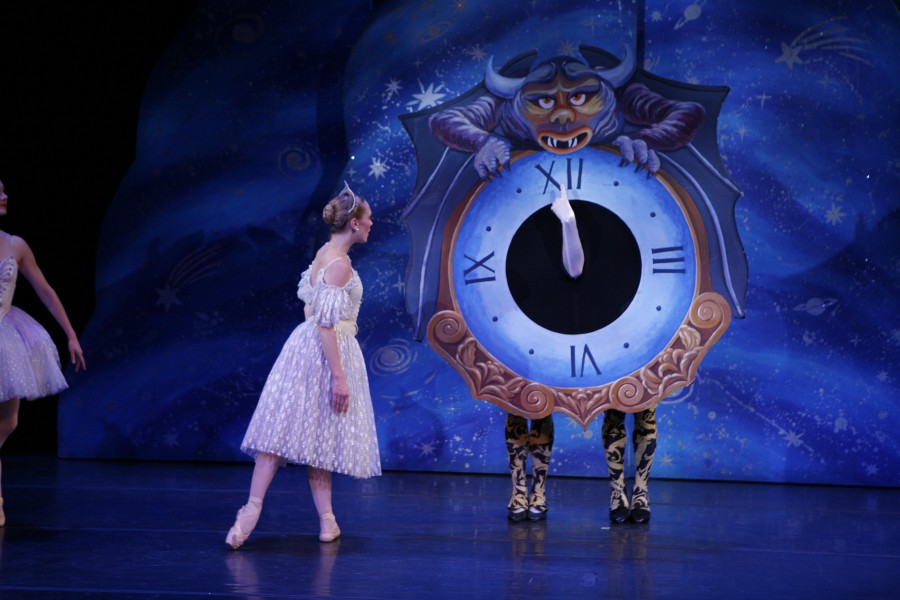
New York Theatre Ballet's Elena Zahlmann in 'Cinderella'. Choreography by Donald Mahler to the music of Prokofiev. Photo: Richard Termine.
There have been challenges: “From an artistic standpoint,” Byer notes, “we have had to forgo presenting certain ballets we’ve had our hearts set on, because we simply can’t afford to mount them, despite our best fundraising efforts. Administratively, we’ve operated with a small skeleton staff for many years. Every person on staff does the work of 3 people… In this competitive and growing field we must have a fully staffed office, and funds to continually mount new revivals and take risks in identifying and presenting the work of young, emerging choreographers.”
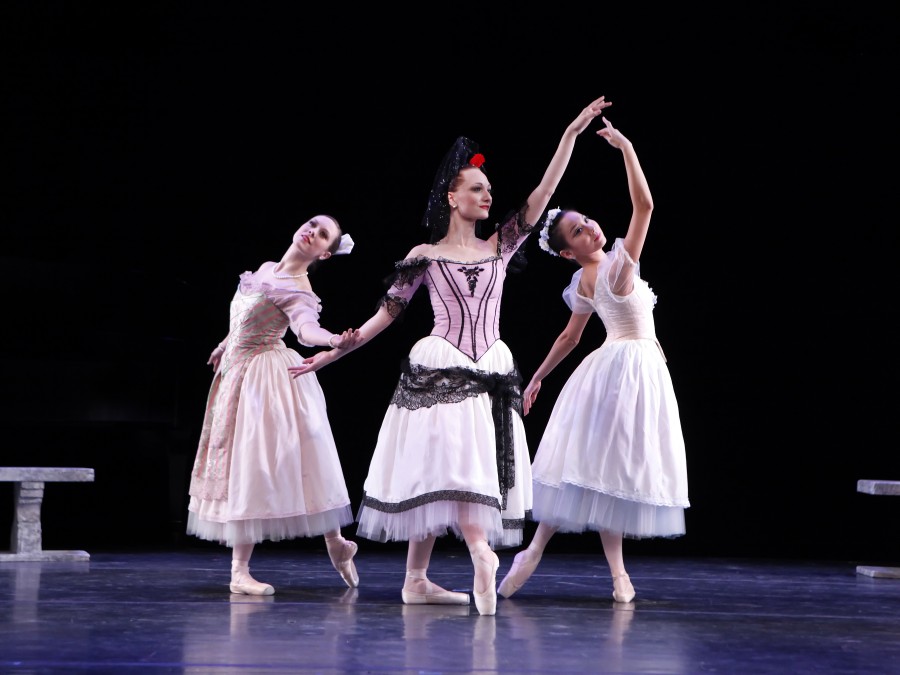
New York Theatre Ballet's Elena Zahlmann, Amanda Garrett, and Young Wha Lim in Antony Tudor's 'Soirée Musicale'. Photo: Richard Termine.
The recession aside, Ballet to the People believes the business model for dance companies in the U.S. is profoundly flawed. The current economic crisis appears only to be deepening a chronic, widespread mess that has existed ever since the Joffrey Ballet’s bitter split with patron Rebekah Harkness in 1964. A mess that will eventually engulf even the better-run companies like NYTB.
American dance companies are forced to manage themselves as commercial businesses and abandon artistically adventurous programs that don’t pack in the audiences. Many companies, like Ballet San Jose, become dependent on one deep-pocketed donor and cannot extricate themselves when the relationship turns corrosive; most professionally run companies try to avoid this but in a tight-money era they don’t have much choice.
The establishment of the National Endowment for the Arts in 1965 introduced a new wave of public funding for dance companies but nearly half a century later government support for dance companies remains inconsequential. The 2012 budget for the NEA has recently been slashed to $146 million. (More on the gradual suffocation of the NEA )
Compare this to the budget for the National Arts Council in Britain, which after a drastic 15% cut still stands at £300 million ($475 million) or about $8 per capita vs. the U.S.’s miserly 50¢.
And Italy, where the government’s Fondo Unico per lo Spettacolo (Sole Fund for Performance) stands at a historic low of €398 million ($530 million) or $9 per capita.
Last November, Germany’s Culture Minister Bernd Neumann announced a 5.1% increase in state ‘investment’ in the arts. ‘Subsidy’, he said, belonged to the past. This was a stake in the nation’s future.
Immediately upon which the EU announced a €1.8 billion ($2.4 billion) funding programme for arts and culture, starting in 2014, marking a 35% increase in EU support for ailing cultural industries – on top of what EU member governments have already committed.
Though Europe is in deeper economic crisis than the U.S., the arts remain a key priority. Consequently, European dance companies have always had great freedom to experiment, to introduce provocative new work, to pay dancers a living wage, and to keep ticket prices low, because their funding source is much more stable and not subject to the whims and fortunes of individual donors or corporations.
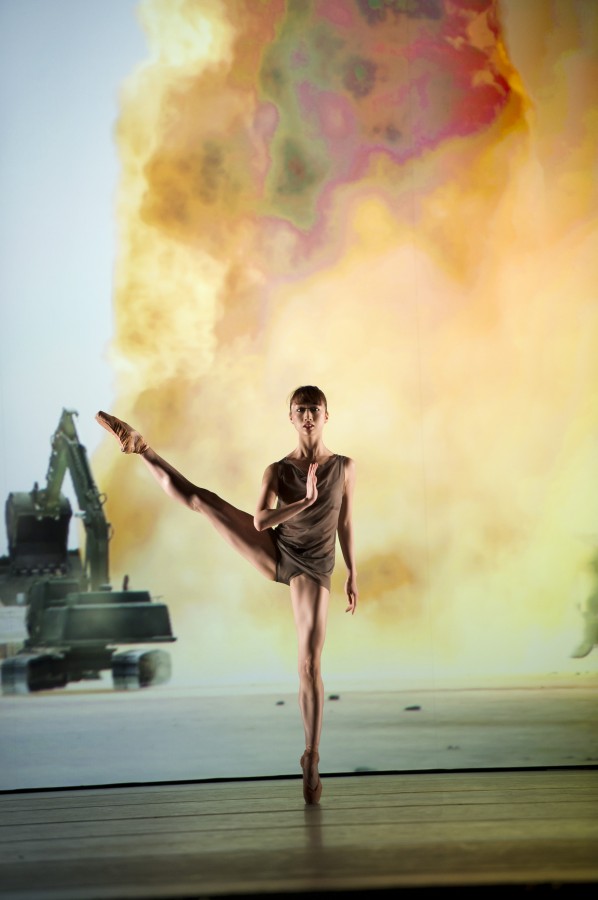
Europe may be crashing and burning but the arts are alive and kicking, thanks to government institutions like the National Arts Council in Britain, and the EU’s new $2.4 bn ‘Creative Europe’ funding programme. The Royal Ballet's Akane Takada in Wayne McGregor's 'Live Fire Exercise'. Photo: Bill Cooper, courtesy ROH.
Public funding is premised on the notion that art is a public good that must be supported by the state if it is to exist at all, and if it is to be any good.
Europeans understand that in dire economic times, performing arts serve an even more critical function than in times of prosperity. Europeans aren’t the only ones who’ve figured this out: Venezuela has made a massive investment in El Sistema, a network of orchestras which targets social change through classical music education for nearly half a million of the nation’s underprivileged children. Venezuelans don’t think this is a “nice to have” but an absolute “must have”, not a cultural policy but a highly targeted national security strategy to keep disadvantaged, at-risk youth off the streets and out of the correctional system. El Sistema gives them a sense of what discipline and dedication to a higher ideal can achieve. Its most famous graduate to date, 31-year-old Gustavo Dudamel, is a rock star both in his home country and in America, where he directs the Los Angeles Philharmonic.
Gustavo Dudamel takes the Los Angeles Philharmonic to Venezuela
In America, where the prison population has tripled in 20 years, with one out of every 99 adults currently behind bars, and the costs of incarceration estimated at $74 billion in 2011 (read the Pew Center report on trends in America’s prison population), clearly not enough policy-makers are thinking about arts education as a solution.
New York Theatre Ballet, once again boxing way above its weight class, is attempting to do something about this with its innovative outreach program called LIFT, targeted at New York City’s at-risk youth. (click here to watch LIFT in action)
As you weigh your choices in the upcoming elections, ask your candidates these hard questions:
- Do they understand the critical role that arts play in fighting crime, and in bolstering America’s image abroad?
- Will they publicly fund a LIFT program for every dance company in America?
(And if you want to know where these much-needed public funds should come from, read my earlier post on stealth fighter jets.)

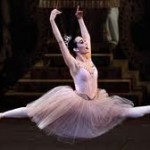

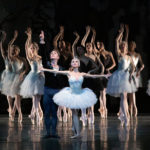

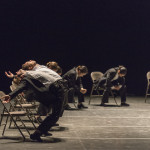
This is one of the most intelligent, caring, and insightful analyses I’ve ever read about the role and struggles of dance in America and New York City, and about New York Theatre Ballet (with which I’m proud to have been associated over the years).
For this treasure of a company to be getting the praise it so richly deserves after its incredible 30-year effort is poetic justice of the highest order.
Thank you for giving this topic the space and thought the subject so richly deserves. I hope it will catch all the right eyes.
I am struck by the similarities between your post and a New York Times article: http://www.nytimes.com/2012/03/04/sunday-review/why-was-the-designer-raf-simons-dismissed.html?pagewanted=1&src=un&feedurl=http://json8.nytimes.com/pages/fashion/index.jsonp
Interesting parallel with the fashion industry, Gretchen! Fashion houses almost all owned by giant corporations who increasingly see the creative talent as expendable or interchangeable. Emphasis is now more on brands and marketing than on the individual designers. Dance companies may not be owned by corporations but have become more dependent on a single corporate donor or philanthropist as other funding sources dry up – which can be very unhealthy. Most obvious parallel between Raf Simons at Jil Sander and Dennis Nahat at Ballet San Jose, both of whom were the resident artistic genius before they were “unceremoniously dumped.”
Typical leftist propaganda. Why shouldn’t dance companies be run commercially?? American taxpayers will never agree to pay for art that only a handful of elitists want to see. NPR is about to lose its federal funding, with good reason. Let rich people and corporations pay for this stuff if they want it. And if I write a check for $20 million I damn well have the right to hire a star from a foreign ballet company to dance with my girlfriend.
Aside from your socialist politics, I admit that you have great taste. Your choice of photos, artwork and videos is sensational. If you are trying to attract more people to go to the ballet then you are doing one helluva job.
This is an old, old debate and one blogger is not going to make a difference when whole movements organized by influential people have failed. Outside of San Francisco, New York and parts of Los Angeles, America is at heart a deeply conservative country and uncomfortable with “provocative art.”
I’ve known Diana for a while and have such admiration for her and NYTB and just think it’s wonderful that you are writing about her. She’s committed equally to the art and the people who make the art – she really is a role model for the artist-citizen.
And kudos to you for pulling all those separate threads into one story! The connection to the obscene rise in the prison population (and the costs associated with that) should be proof that as a country we have extremely skewed priorities and exhibit a willful ignorance that obscures for too many Americans the potential for long-term solutions to societal problems. Is it idealistic to think that art/dance can play a role in a healthy society and is therefore a worthwhile investment, despite the fact that the payoff is hard to quantify? Undoubtedly – but idealism is built into the founding documents of our nation. People like Diana Byer are proving that ballet/dance/art can be relevant, useful AND BEAUTIFUL!
Carla, you are doing such tremendous job, go ahead with the good work!
Carla – This is such a fantastic article — and thank you for all the wonderful links. I simply love what you are doing!! Keep on spreading the word.
Mr. Anderson, thank you for the compliment, and here is why dance companies shouldn’t be run commercially: because great art doesn’t always immediately attract big audiences. Because public taste often takes time to develop.
Two of the greatest ballet classics of all time – Swan Lake and The Nutcracker – were very poorly received at the time of their premieres in Russia.
It took decades for Van Gogh to be recognized as one of the greatest painters in history, long after he was dead.
John Cage eventually won fame in his lifetime as one of the most influential avant-garde composers, but in the early part of his career his music was not widely appreciated.
Artistic directors and curators have to lead the way, rather than simply produce work that is familiar and that panders to popular tastes. But they can’t lead if they don’t have the freedom to take risks. We can’t leave it solely to rich people and corporations to fund the arts, because they generally demand some influence over the final product. Just as you – not unreasonably – demand the right to hand-pick a star to partner your girlfriend, after writing a check for $20 million to support her ballet company.
Two of the most in-demand American choreographers, Mark Morris and William Forsythe, were first recognized for their talents by state-funded European dance companies, which offered them the support and artistic freedom they never would have had in America at that stage in their careers.
I do appreciate the “Socialist” label. I think I will give up Carolina Herrera and Erdem and start wearing that instead.
And the arts are not just for the elite or just for entertainment. They are part of our humanity, our expression of our culture, and feed a part of us that cannot be measured in dollars, and thriving arts mean employment and aspiration as well. It’s a recent USian idea that everything should be about short-term return on investment and marketability. This is not true universally in either location or time. The arts have always had patrons and state support. It wasn’t long ago that US arts companies touring in Eastern Bloc countries were considered a valuable PR and diplomatic tool. In European and Nordic countries, the people would no sooner cut out the arts than they would math in schools or public roadways. I thought this quote said it well:
“I think I got disappointed over the years, about New York, about the States. You know, sometimes you go and visit Europe and see good old socialism in its good part! You see public concern about art, and young people’s participation and young faces in the audience. Then you arrive in the States and it is $150 to go see the opera. Ridiculous. We have so much young talent on the streets, but because everything is commercial, they finally drift away from their dream of their life.”
-Mikhail Baryshnikov
Pandering to the lowest common denominator in order to chase large audiences and profits has failed the networks and the commercial music industry in the US, as cable and internet provide fresher, more innovative, more compelling products and draw more and more of the viewing audience.
Great post, Carla, on so many levels!
I have a special place in my heart for Diana Byer and NY Theatre Ballet. Diana puts her heart and soul into that company and does an amazing job. She’s also a Répétiteur for the Tudor Trust, and I’ve had the pleasure of working with her many times. (Thank you for including a clip of Tudor’s Soiree Musicale, which NYTB recently reconstructed from notation).
BTW, your answer to Mr. Anderson was excellent! Artistic directors indeed need to lead the way…… and, Kaija. your comments are beautifully voiced.
While Gabriel Anderson’s dismissal of your writing on Arts funding as ‘ leftist propaganda’ is not particularly insightful or helpful, he does raise an important question: what should taxpayers fund and why? Some of what we do fund beyond national defense, public safety and infrastructure is instructive. The NEA costs $0.49 per citizen. Tax credits to the oil industry cost about $8 per citizen, not out of line with costs of other industries’ tax credits. Farmers, disproportionally agribusiness, receive between $35- $70 per citizen in direct subsidies each year though less than 3% of the population actually farms. Home owners cost taxpayers about $300 per citizen through their mortgage deduction, and while a far more significant percentage of the population, still only 26% of US households. So why is a dubious expenditure to increase home ownership (Canada has no deduction and slightly higher home ownership) worth 600 times as much as funding the arts? If it is simply that it is ‘socialist’ and therefore prima facie bad, what do other capitalist nations do? The 2011 Cato institute’s annual ranking of ‘free economies’ (as opposed to socialist), ranks Hong Kong first, followed by Singapore and New Zealand. Given Hong Kong’s recent commitment to spend $3 Billion on the West Kowloon Cultural District (over $400 per citizen) it is not representative but Singapore’s Arts budget of $165M or $32.49 per citizen and New Zealand’s art subsidy of $238M or $53.68 per citizen are instructive. These captains of capitalism understand the arts are a critical element in a nation’s identity. As I was walking past a bus stop this morning I noticed a poster advertising travel to Great Britain. It had a picture of a modern sculpture at London’s Tate gallery and proclaimed…. “Great Britain GREAT ART…and the Tate is free admission ”. Art pays in many ways. I marvel at the number of Japanese tourists who come to New York and wait in any weather at the stage door of the Met to get autographs of ballet stars… tourists who then return to their $300 hotel rooms before dining and shopping before the next performance. They came here for the art. That art subsidizes the hotels, restaurants and stores. Art has been subsidized by the state for eternity, from the feudal states of Michelangelo’s era to modern technocracies for a reason- It defines us, it enriches us and it stimulates us but for those worried about the purity of capitalism, it also indirectly more than pays back our taxpayer investment. The Parthenon, completely state funded, is still bringing in the silver after 2,441 years. For the Greeks, I am sure that is secondary to their national pride in some of the greatest (subsidized) art in the world.
Thank you, Chuy McHale, for buttressing my case and putting the problem in such fascinating perspective.
As you say, investing in the arts is NOT charity. Non-profit arts organisations in the U.S.
– generate $134 bn in total economic activity (of which $80 bn is event-related spending by arts audiences)
– bring in over $10 bn in federal, state & local income taxes
– support over 2 million full-time equivalent jobs (of which less than 4,000 are dancers employed under professional contracts – a depressing statistic, but let’s not digress)
For more details, see: http://theperformingartsalliance.org/site/PageServer?pagename=economic_impact_arts
The federal government props up a self-destructing auto industry and a hubristic banking oligopoly but lacks the political will to invest in the arts. It refuses to acknowledge that within the arts lie solutions to a number of social ills and the restoration of America’s image.
I wouldn’t exactly say ‘alive & kicking’ here in Europe; at least not in all the countries. I live in Portugal & know for a fact that dance funding definitely took a downturn
You’re right: arts funding has been slashed in some European countries in response to the economic crisis. However, per capita spending – by national governments and, centrally, by the EU – is still much higher than in the U.S.
In Europe, there is broader social acceptance of the principle of public funding for the arts, and an understanding of why arts organizations need stable, long-term funding that can only come from public coffers. In the U.S. today the issue has become strongly polarized along political party lines (Democrats generally favor public funding whereas Republicans want to leave this to the billionaires.)
The European mindset frees artists and performers to take risks and not constantly have to worry about putting “bums in seats.” American dance companies, on the other hand, are slaves to the annual ‘Nutcracker’ production and rely far too heavily on flying in big-name stars in order to maximize their audiences.